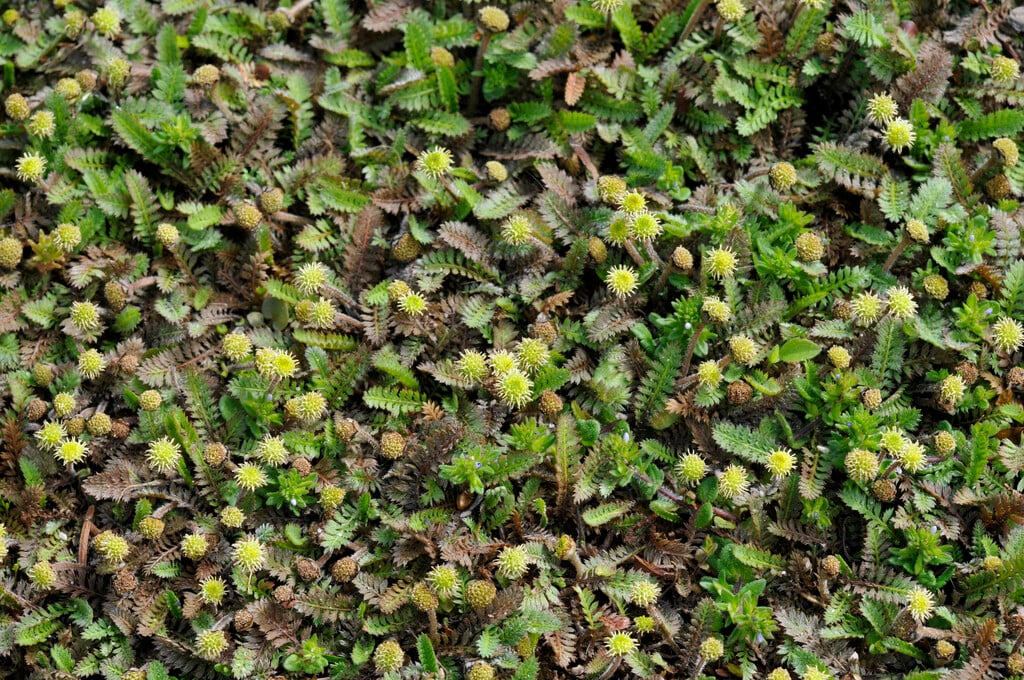Leptinella squalida
leptinella
A mat-forming perennial with creeping stems that root at the nodes, and small, fern-like, divided green leaves often flushed with purple. Small, rounded yellowish-white flowers are produced on short stems just above the foliage in summer
Size
Ultimate height
Up to 10cmTime to ultimate height
2–5 yearsUltimate spread
0.5–1 metresGrowing conditions
Moisture
Moist but well–drainedpH
Acid, Alkaline, NeutralColour & scent
| Stem | Flower | Foliage | Fruit | |
| Spring | Green Purple | |||
|---|---|---|---|---|
| Summer | Yellow White | Green Purple | ||
| Autumn | Green Purple | |||
| Winter | Green Purple |
Position
- Full sun
- Partial shade
Aspect
East–facing or South–facing or West–facing
Exposure
Exposed or Sheltered Hardiness
H5Botanical details
- Family
- Asteraceae
- Native to GB / Ireland
- No
- Foliage
- Semi evergreen
- Habit
- Matforming
- Genus
Leptinella are annuals and creeping, tufted or mat-forming perennials, forming low carpets of finely-divided, often aromatic, fern-like leaves. Button-like flowerheads on short stalks appear from late spring to summer
- Name status
Correct
- Plant range
- New Zealand
How to grow
Cultivation
Thrives in well-drained soil that does not dry out; position in full sun in cooler areas, or in part shade in warmer areas. An unusual ground cover for containers, or small spaces like crevices between flagstones, but aggressive spreading means it has potential to become a nuisance in more open spaces
Propagation
Propagate by seed or by division in spring; spreads naturally by rhizomes, so sections can easily be detached and replanted
Suggested planting locations and garden types
- Cottage and informal garden
- Patio and container plants
- Ground cover
Pruning
No pruning required
Pests
Generally pest-free
Diseases
Generally disease-free
Love gardening
Sign up to receive regular gardening tips, inspiration, offers and more
View our Privacy Policy
Get involved
The Royal Horticultural Society is the UK’s leading gardening charity. We aim to enrich everyone’s life through plants, and make the UK a greener and more beautiful place.

